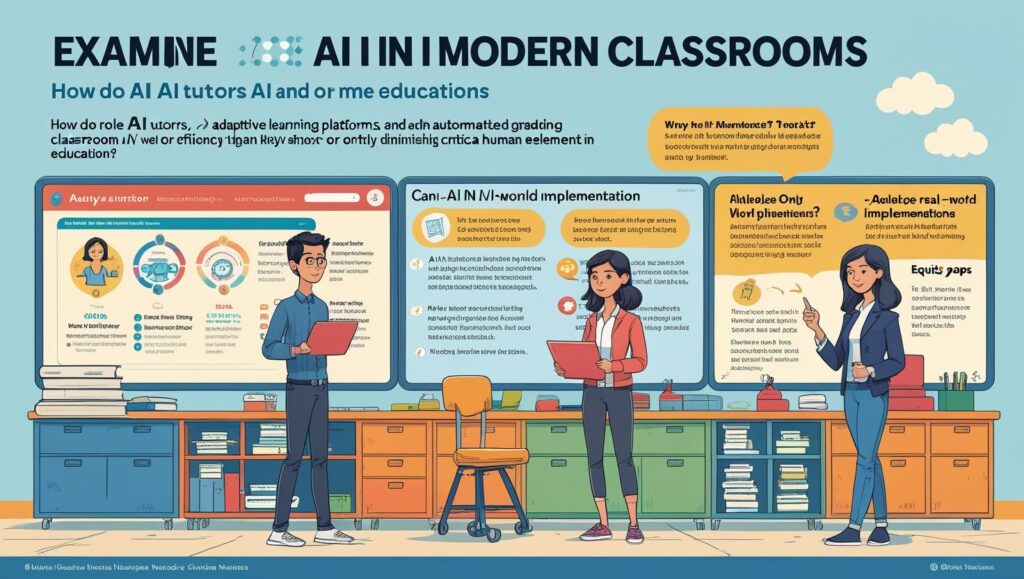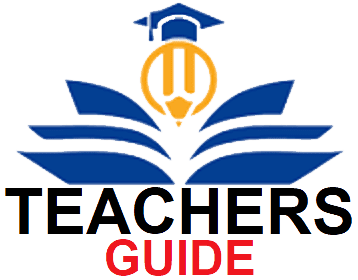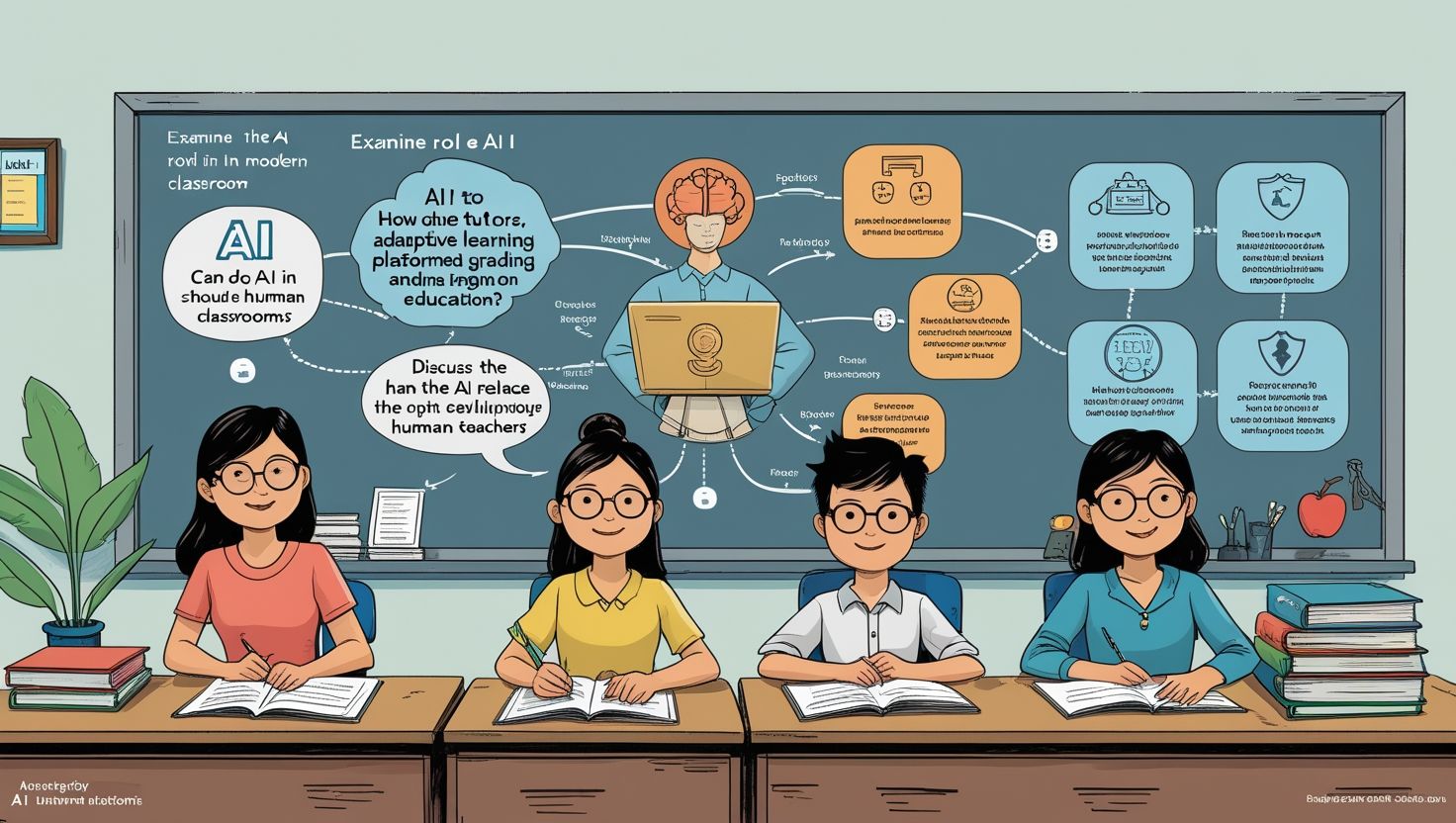Slide 1: Title Slide, Title: AI Teaching in the Classroom
Subtitle: Revolutionizing Education through Artificial Intelligence
Presented by: Teachers Guide
Date: June 09, 2025
Slide 2: Introduction
AI in education is transforming classrooms into more interactive and efficient learning environments. From automating administrative tasks to offering personalized learning paths, AI technologies are enhancing both teaching and learning. This presentation explores the role, benefits, challenges, and future of AI integration in classrooms.
Slide 3: What is AI in Education?
Artificial Intelligence (AI) refers to the simulation of human intelligence processes by machines. In education, it includes tools that assist teachers, automate grading, adapt learning experiences, and offer intelligent tutoring. AI in classrooms blends machine learning, data analytics, and automation to improve educational outcomes.
Slide 4: Historical Background of AI in Classrooms
AI’s journey in education began with intelligent tutoring systems in the 1980s. With advancements in computing and data analytics, AI has become more sophisticated. Today’s classrooms utilize chatbots, virtual tutors, and predictive analytics to support both educators and learners in various educational settings.
Slide 5: Types of AI Tools in Education
AI tools in classrooms include adaptive learning platforms, automated grading systems, virtual assistants, facial recognition for engagement, and plagiarism checkers. These tools help teachers streamline their tasks and allow students to engage in a more personalized learning experience that fits their pace and style.
Slide 6: Role of AI in Classroom Teaching
AI supports teachers by handling routine tasks such as grading, attendance, and report generation. It provides insights into student performance and learning gaps. By doing so, teachers can focus more on mentorship, critical thinking activities, and emotional support for students in the classroom.
Slide 7: Personalized Learning
One of AI’s most transformative roles in education is delivering personalized learning. AI systems assess each student’s strengths and weaknesses to offer customized content and learning paths. This ensures every learner receives support that matches their individual learning style and pace.
Slide 8: AI-Powered Virtual Tutors
Virtual AI tutors provide 24/7 support for students outside classroom hours. They answer questions, explain concepts, and guide students through practice problems. These tools are especially helpful for students who need extra help or cannot access traditional tutoring services.
Slide 9: Intelligent Content Creation
AI can generate smart content such as digital textbooks, interactive simulations, and practice quizzes. It adapts educational material to meet curriculum standards while enhancing student engagement. AI-generated content ensures consistency and quality across various teaching modules and subjects.
Slide 10: Automating Administrative Tasks
AI significantly reduces the administrative burden on teachers. Tasks such as attendance tracking, test scoring, report card generation, and curriculum mapping can be automated. This saves time, allowing teachers to focus more on instructional strategies and student engagement.
Slide 11: Enhancing Student Engagement
AI can assess facial expressions, eye movement, and response time to measure student engagement. These analytics help teachers adjust their strategies in real time to improve attention and interaction. AI tools gamify lessons and make learning more interactive and enjoyable.

Slide 12: Assessment and Evaluation
AI tools support formative and summative assessments by analyzing patterns in student responses. They offer instant feedback and help teachers identify common misconceptions. This real-time data aids in modifying instructional approaches and improving student learning outcomes efficiently.
Slide 13: Language and Communication Support
AI tools like language translation and speech recognition help overcome language barriers in diverse classrooms. They assist non-native speakers in understanding content and contribute to more inclusive learning environments. AI ensures equal access to education for all students.
Slide 14: Supporting Diferent Needs Education
AI technologies like speech-to-text, visual recognition, and customized content cater to students with different needs. They offer tailored support for conditions like dyslexia, autism, or visual impairments. This inclusivity ensures all students receive quality education suited to their abilities.
Slide 15: Teachers’ Role in AI-Classrooms
Despite AI advancements, teachers remain central to education. Their role evolves into facilitators, mentors, and emotional guides. They interpret AI-generated data, personalize interactions, and ensure ethical, human-centric classroom environments. Teachers and AI complement rather than replace each other.
Slide 16: Ethical Concerns and Privacy
The use of AI in education raises concerns about student data privacy, algorithm bias, and surveillance. Ensuring data is stored securely and used responsibly is essential. Schools must implement ethical policies that protect students while leveraging AI’s benefits.
Slide 17: Limitations of AI in Teaching
AI lacks emotional intelligence and the human touch that teachers provide. It may struggle to handle unpredictable behavior, emotional distress, or cultural sensitivity. Over-reliance on AI may lead to reduced critical thinking and creativity among students.
Slide 18: Training Teachers for AI Use
Educators need proper training to use AI tools effectively. Professional development programs should include hands-on practice with AI software, understanding data reports, and ethical considerations. Empowering teachers ensures AI is implemented purposefully and meaningfully in classrooms.
Slide 19: Case Study: AI in a Smart Classroom
In a smart classroom in Singapore, AI-powered tools like facial recognition and learning analytics track student attention and adapt lessons accordingly. Teachers report increased engagement and performance. Such case studies highlight AI’s successful integration and real-world educational benefits.
Slide 20: Future of AI in Education
AI will continue to evolve, offering real-time emotional recognition, augmented reality-based lessons, and more refined adaptive learning. The future classroom will likely be a hybrid environment where AI handles personalization while teachers focus on creativity, empathy, and social learning.
Slide 21: Recommendations for Schools
Schools should start small—pilot AI tools, train staff, and collect feedback. A step-by-step integration approach ensures smoother transitions. Collaboration between developers, educators, and policymakers is necessary to create AI solutions that are both effective and ethical for education.
Slide 22: Government and Policy Support
Policy frameworks must support AI adoption in schools. This includes funding for infrastructure, data protection laws, and research initiatives. Government agencies play a vital role in ensuring equitable access to AI-based education across urban and rural regions.
Slide 23: AI in the Global Classroom
AI is being implemented globally, from the U.S. and China to Finland and Kenya. Each region adapts AI to suit cultural, economic, and curricular contexts. International collaboration and knowledge-sharing will help develop inclusive and effective AI education systems worldwide.
Slide 24: Conclusion
AI in classroom teaching offers vast potential for personalization, efficiency, and inclusivity. While it presents challenges, thoughtful implementation can create a balanced and enriched learning environment. Teachers remain essential, working alongside AI to guide and inspire the next generation.
Slide 25: References
- Holmes, W., Bialik, M., & Fadel, C. (2019). Artificial Intelligence in Education: Promises and Implications.
- UNESCO (2021). AI and the Futures of Learning.
- Luckin, R. et al. (2016). Intelligence Unleashed: An Argument for AI in Education.
- OECD (2021). AI and the Future of Skills, Volume 1.
- World Economic Forum (2020). Schools of the Future Report.


What’s up to all, the contents present at this website are truly remarkable forr people knowledge,
well, keep up the good work fellows. https://bookofdead34.wordpress.com/